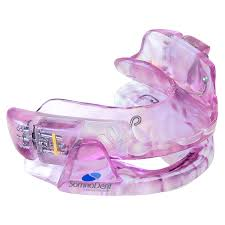What is TMJ?
TMJ (Temporomandibular joint disorder) is a term describing any disorder causing inflammation of the temporomandibular joint, which connects the skill to the mandible. There are several different conditions that can cause pain in the jaw joint and muscles used in opening and closing the jaw. Disorders affecting the temporomandibular joint can have consequences on an individual’s ability to eat, speak, swallow, chew, and breathe.
Possible causes of TMJ Disorder
- Injury to the jaw, including whiplash or stretching due to insertion of a breathing tube
- Teeth clenching and grinding
- Arthritis
- Infection
- Dental procedures
- Auto-immune diseases
- Hormones
- Genetics
An individual suffering from TMJ may experience
- Clicking or popping noise in the jaw
- Being unable to open the mouth comfortably
- Locking of the jaw when trying to open the mouth
- Neck pain, shoulder pain, back pain or headaches
- An irregular bite
- Swelling of the face around the jaw joint
- Ringing in the ears or decreased hearing
- Dizziness and vision problems
TMJ disorders are a relatively unexamined area of medicine causing diagnosis and treatment of these conditions to be difficult, but what is known about TMJD has been used to effectively treat or manage the symptoms of the condition.
Occasional discomfort or pain of the jaw joint or facial muscles is not uncommon and can occur for any number of reasons. Often TMJ pain goes away within days or weeks, but if the problem persists for a month or more a doctor should be consulted.
Sleep apnea often goes undiagnosed

Sleep apnea is a condition characterized by pauses in breath during sleep. These pauses can last for several seconds to minutes. They usually occur five to thirty times or more per hour.
There are three different types of sleep apnea: Obstructive (when a physical barrier blocks or collapses the air passageway), Central (when the brain fails to send signals to muscles that control breathing), and Complex (a combination of obstructive and central). Obstructive sleep apnea is the most common and makes up about 84% of sleep apnea cases.
In cases of obstructive sleep apnea, a pause in breath is usually followed gasping, choking, or snoring… although not all snoring is caused by sleep apnea.
Daytime signs of sleep apnea
Daytime signs of sleep apnea include morning headaches, dry mouth/throat in the morning, irritability, sleepiness, depression, and lack of focus. If untreated, sleep apnea can increase the risk of heart disease, diabetes, high blood pressure, and stroke.
Sleep apnea often goes undiagnosed since the person suffering from the condition does not notice the signs while sleeping. Through looking at family history, medical examination, and sleep studies, physicians can diagnose sleep apnea and prescribe proper treatment. Treatment options include lifestyle changes, dental appliances, breathing devices, or surgery.
LifeSmiles of New Hope offers Oral Appliance Therapy as one way to treat sleep apnea. Oral Appliance Therapy (OAT) involves wearing a custom dental device in the mouth. This device is similar to a mouthguard used in sports and repositions the jaw during sleep.
By stabilizing the lower jaw in a slightly forward position, the device holds the upper airway open and prevents it from collapsing during sleep, which is the primary cause for snoring and sleep apnea.
Please call us for more information or to schedule an appointment regarding Sleep Apnea Treatments. (770) 445-1314
